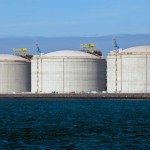 Gold rose for a second day on Monday as the Eurozone braced for another Greek drama, spurring safe haven bids for the precious metal, while demand in China provided additional support. A strong dollar, however, kept gains checked. Copper slid for a third day, hovering near the lowest in 4-1/2 years, as weak manufacturing growth in China and Europe raised demand worries.
Gold rose for a second day on Monday as the Eurozone braced for another Greek drama, spurring safe haven bids for the precious metal, while demand in China provided additional support. A strong dollar, however, kept gains checked. Copper slid for a third day, hovering near the lowest in 4-1/2 years, as weak manufacturing growth in China and Europe raised demand worries.
Comex gold for delivery in February gained 0.21% to $1 188.7 per troy ounce by 12:06 GMT, having shifted in a daily range of $1 198.0-$1 177.8 an ounce. The precious metal edged up 0.18% on Friday to $1 186.2, but not before it touched $1 167.3, its lowest since December 1st.
The precious metal drew support as investors sought safe haven after Greek Prime Minister Antonis Samaras said that a victory for the main opposition party Syriza would cause default and Greeces exit from the euro area.
Syriza leader Alexis Tsipras said his party would end German-led austerity, vowing to restructure his nations debt. “Greece will write down on most of the nominal value of debt, so that it becomes sustainable,” Tsipras said.
German Chancellor Angela Merkel is ready to accept the countrys Eurozone exit, Der Spiegel magazine reported, as polls suggested Berlin sees the exit as inevitable, in case Syriza wins, but manageable.
The euro fell to the lowest in almost nine years against the US dollar, sending the greenback higher against a basket of major trading partners. The US dollar index for settlement in March was up 0.55% at 91.890 at 12:06 GMT, holding in a daily range of 91.985-91.550. The US currency gauge gained 0.81% on Friday to 91.383. A stronger greenback makes dollar-denominated commodities more expensive for holders of foreign currencies and curbs their appeal as an alternative investment, and vice versa.
China demand
The yellow metal also drew support on strong demand from China ahead of the Lunar New Year holiday in early 2015, during which people exchange gold gifts or buy the metal for good luck.
The precious metal was trading at the Shanghai Gold Exchange with a premium of around $6 an ounce to the global benchmark, or $2 higher than last week. Demand is expected to stay strong at least until the holidays on February 19-20th.
However, the firm dollar and expectations for the Federal Reserve to begin gradually raising interest rates later this year capped gains. Investors will be scouring through FOMCs December Meeting Minutes, due to be released on Wednesday, for clues on the timing of interest rate hikes.
Reflecting overall bearish sentiment on gold, assets in the SPDR Gold Trust, the biggest bullion-backed ETF, were unchanged on Friday at 709.02 tons, the lowest since September 2008. Changes in holdings typically move gold prices in the same direction. Assets fell 11% last year compared to a 41% drop in 2013.
Copper
Copper fell for a third session on Monday, pressured by lackluster manufacturing growth in China, Japan and Europe, while factory activity in the US expanded at the slowest pace in six months in December. The strong dollar also weighed.
Comex copper for delivery in March fell 1.65% to $2.7710 per pound by 12:06 GMT, having shifted in a daily range of $2.8270-$2.7645, close to last Mondays 4-1/2-year low of $2.7560. The industrial metal slid 0.28% on Friday to $2.8175.
Germany’s manufacturing sector grew in December after contracting the previous month, with the corresponding PMI coming in at an expected 51.2, while Spain posted slower-than-projected growth. Italy’s manufacturing activity shrank for a second month and France remained firmly in the contraction zone. The Eurozone as a whole saw its manufacturing gauge jump to 50.6 from 50.1 in November, but trailed projections for an increase to 50.8.
Government data showed on Thursday that China’s manufacturing sector grew at the slowest pace in 18 months, with the official PMI hitting 50.1 from 50.3 in November, while a private gauge earlier in the week slid to 49.6 from 50.0 the previous month. Non-manufacturing PMI inched up to 54.1 from 53.9 in November, China’s National Bureau of Statistics reported.
Moreover, manufacturing in the US cooled in December as well. The Institute for Supply Management’s factory activity index slid to a six-month low of 55.5 from 58.7 in November, underperforming analysts’ expectations for a moderate drop to 57.6. Nevertheless, this was the 19th straight month of expansion for the US manufacturing sector.
In Japan, the Nomura/JMMA Manufacturing PMI for December came in at 52.0, unchanged from a month earlier, compared to projections for a jump to 52.1.
However, support was drawn on expectations for the adoption of more stimulus measures in China and Europe. The Peoples Bank of China will change rules on how loan-to-deposit ratios are calculated at banks in order to boost liquidity conditions without resorting to cutting banks minimum reserve requirements.





